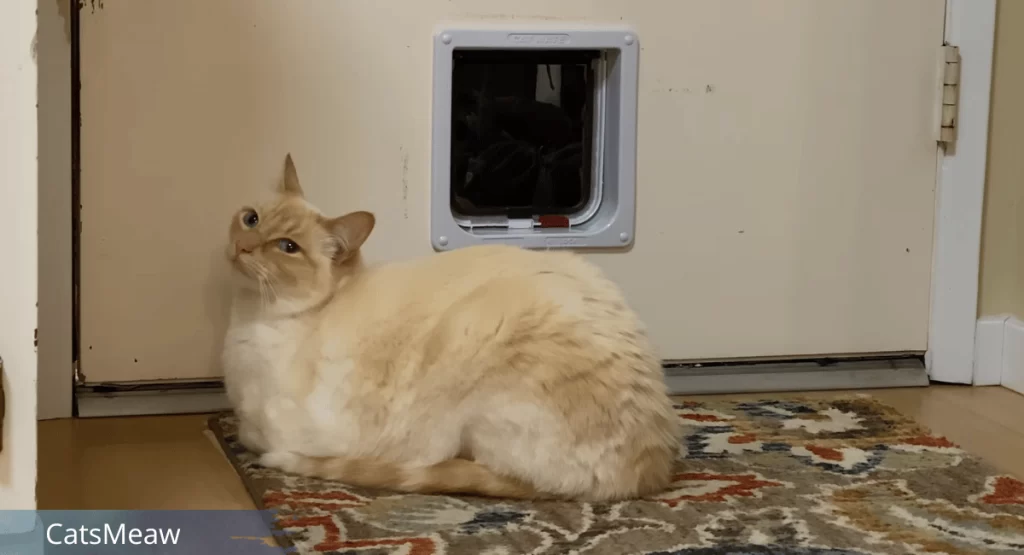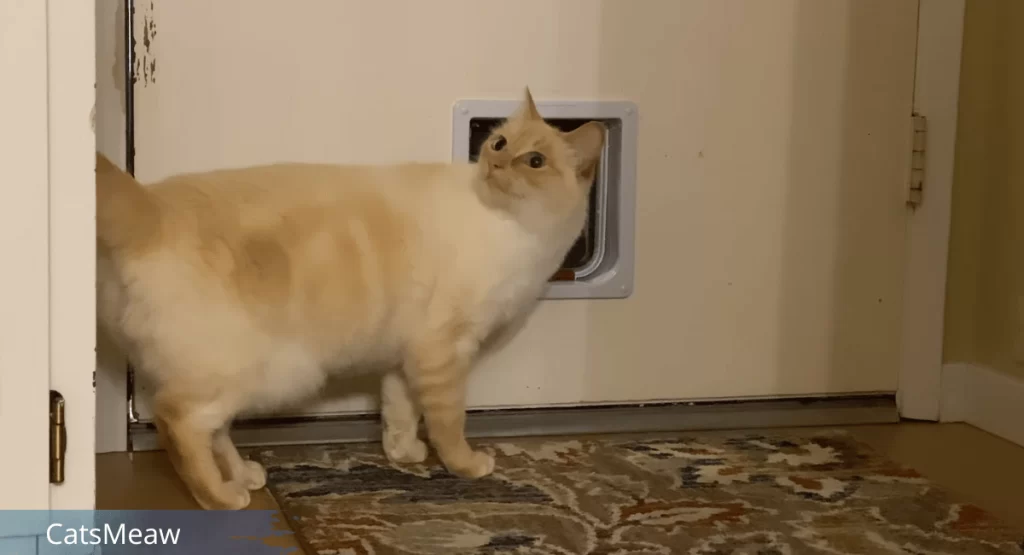Training our feline friends to use a cat flap can be a game-changer for both the cat and the cat owner. It bestows upon them a new level of freedom, allowing them to explore the great outdoors or simply bask in the sun at their leisure. However, introducing a cat to this newfound independence isn’t always straightforward. This guide will walk you through the ins and outs of cat flap training, ensuring a smooth transition for your furry family member.

Table of Contents
Introduction to Cat Flaps
Cat flaps, also known as cat doors, are small portals installed in doors or walls that allow your cat to enter and exit the house without any human assistance. The concept might seem simple, but it’s a significant leap for a cat used to having doors opened for them. Initially designed with a basic flap over a hole, cat flaps have evolved significantly. Today, they come with a variety of features including microchip activation, four-way locking systems, and even app-controlled mechanisms to give you control over your cat’s movements.
The idea of teaching a cat to navigate through this miniature door might seem daunting at first. Cats are creatures of habit and introducing a new routine involves patience, understanding, and a bit of know-how. The journey from the first introduction to your cat confidently using the cat flap involves several steps, each crucial for a successful training process.
Benefits of Using a Cat Flap
The advantages of having a cat flap are numerous for both you and your cat. For starters, it offers your cat the freedom to explore the outdoors at their will, allowing them to indulge in their natural behaviors like hunting and territory patrolling. This freedom can lead to a happier, more content, and physically fit cat.
For cat owners, the convenience cannot be overstated. Gone are the days of playing doorman to your furry overlord, opening and closing doors at all hours. Furthermore, cat flaps can help reduce indoor cat conflicts by providing an escape route for cats feeling threatened or stressed by other household pets.
Additionally, cat flaps can contribute to better house training and fewer accidents, as your cat has constant access to their outdoor bathroom area. It’s clear that the benefits of installing a cat flap extend well beyond simple convenience, fostering a healthier and more harmonious living environment for everyone involved.
Understanding Cat Behavior
Before diving into the training process, it’s essential to grasp the basics of cat behavior. Cats are naturally cautious creatures, often wary of new objects and changes in their environment. This cautiousness is a survival instinct, keeping them safe from potential threats. Therefore, when introducing a new element like a cat flap, it’s critical to be patient and allow your cat to become comfortable at their own pace.
Cats are also highly curious and intelligent, qualities that can be leveraged during the training process. With the right motivation, such as treats or their favorite toy, you can encourage your cat to explore and eventually use the cat flap. Understanding these facets of cat behavior is crucial for a smooth training process, as it allows you to tailor the training to your cat’s natural instincts and preferences.
Choosing the Right Cat Flap for Your Cat
Selecting the appropriate cat flap is the first step in the training process. Consider the size of your cat; the flap needs to be large enough for them to pass through comfortably, but not so large as to be intimidating. The location is also vital; it should be in a quiet, low-traffic area where your cat feels safe.
Related: Best Tips to Toilet Training Your Cat
Next, consider the type of cat flap. Basic models are purely manual, while more advanced versions offer microchip recognition, which prevents other animals from entering your home. Think about what features are important for your lifestyle and your cat’s safety. It’s also worth considering the durability and security of the cat flap to ensure it withstands the elements and potential intruders (animal or human).
Preparing Your Cat for Cat Flap Training
Preparation is key for a smooth training process. Start by allowing your cat to investigate the cat flap at their own pace, without any pressure to use it. You can prop the flap open initially, so your cat can see and smell through the opening, making it less daunting.

Introduce positive associations with the cat flap area by placing treats or their favorite toys nearby. This step is about making your cat comfortable with the cat flap’s presence in their environment, breaking down any initial apprehension or fear.
Step-by-Step Guide to Cat Flap Training
Now, let’s dive into the training process. Begin by encouraging your cat to approach the cat flap. Use treats or toys to lure them closer, praising them for any interest they show. Once they’re comfortable being near the cat flap, you can start getting them used to the sensation of pushing through it.
- First Encounters: Hold the flap open and coax your cat through with a treat. Repeat this several times until they’re comfortable passing through the open flap.
- Building Confidence: Gradually lower the flap over successive attempts, allowing your cat to get used to the feel of the flap against their back. This step might take time, as some cats will be more hesitant to push through.
- Independence: Once your cat is pushing through the partially open flap, it’s time to let them try it fully closed. Stand on the opposite side with a treat or toy to encourage them through.
- Consolidation: Practice makes perfect. Encourage your cat to use the cat flap from both sides of the door, at different times of the day. Consistency is key to reinforcing this new behavior.
Troubleshooting Common Issues During Training
Not all cats will take to the cat flap immediately, and that’s okay. If your cat seems particularly hesitant, take a step back in the training process and move at a slower pace. For cats that are scared of the flap noise, try muffling the sound with tape until they’re more confident.
Some cats may only go through the flap in one direction. This is common and can usually be addressed by practicing from both sides equally. Patience and persistence are your best tools during this phase.
Training Tips for Older Cats
Older cats might take a bit longer to adapt to using a cat flap, primarily if they’ve never used one before. The key is to move at an even slower pace, respecting their comfort levels. Using highly motivating treats or their favorite toys can be particularly effective for older cats. Remember, it’s never too late for a cat to learn new tricks, but the approach should be gentle and patient.
Safety Precautions When Using a Cat Flap
Safety is paramount when using a cat flap. Ensure the flap is properly installed and regularly check it for any damage or wear that could harm your cat. If you’re using a microchip cat flap, regularly test it to make sure it’s functioning correctly.
Related: Best Interactive Toys for Indoor Cats
Consider the location of the cat flap carefully to ensure it doesn’t lead directly onto a busy road or other hazardous areas. Lastly, keep an eye on your cat’s outdoor activity, and make sure they’re not putting themselves in danger by straying too far from home.
Conclusion and Final Thoughts on Cat Flap Training
Training your cat to use a cat flap can significantly enhance their quality of life, offering them freedom while providing you with convenience. The key to successful cat flap training lies in patience, understanding of cat behavior, and a step-by-step approach that respects your cat’s pace. Remember, every cat is unique, and what works for one may not work for another. Adjust the training process as needed, and don’t hesitate to seek advice from a veterinarian or a cat behaviorist if you encounter persistent issues.
Ultimately, the effort put into training your cat to use a cat flap is a small price to pay for the independence it grants them and the peace of mind it offers you. With the right approach, your cat will be navigating that cat flap like a pro in no time, enjoying the freedom of the great outdoors while having a safe, secure route back home.
